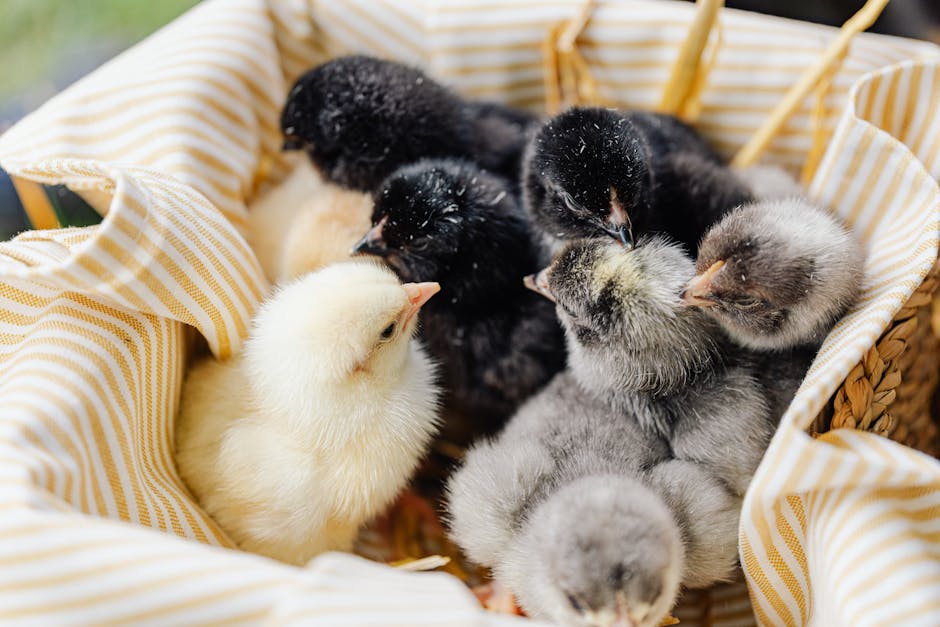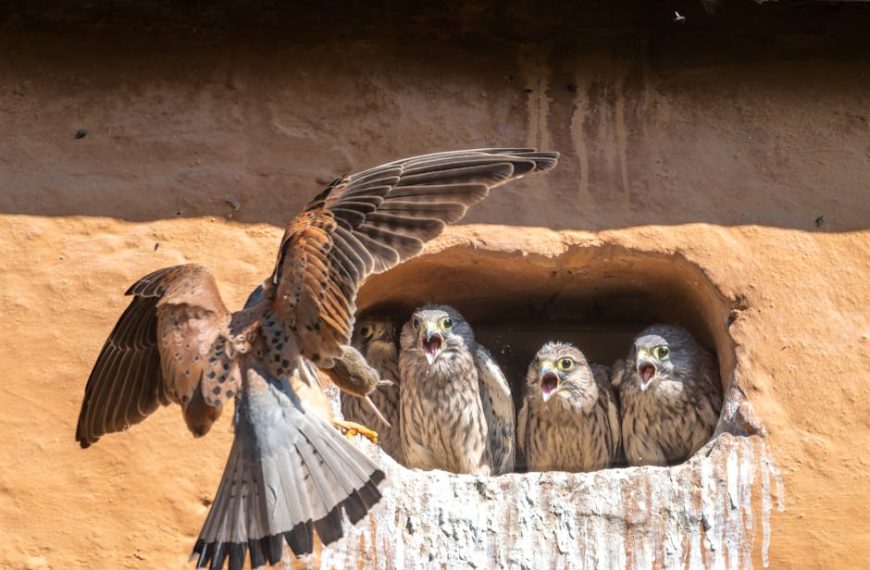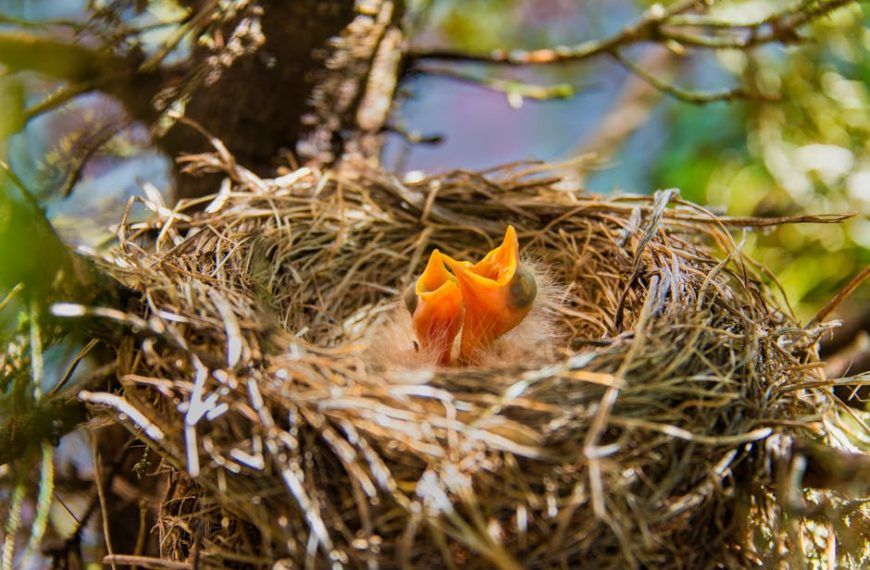Baby birds, or hatchlings as they are often called, differ significantly from their parents from the moment they peep out of their shell until their first flight. There is a distinct timeline that unfolds, a series of developmental stages that each bird undergoes before it leaves the familial nest and ventures into the wild. Various species progress through these stages at different rates, emphasizing the diversity within the avian world.
The Intricacies of Avian Development Post-Hatching
A bird’s life begins within a fragile yet safe sanctuary: the egg. Just a few weeks after the eggs are laid by the mother, the hatchlings, with their characteristic fuzz and closed eyes, break through the shell into a new world. They are completely dependent on their parents for warmth, protection, and sustenance.
As the days pass, their physical features start to take shape: their downy fuzz is replaced by feathers, eyes open wide to monitor their environment, and their tiny wings start flapping, hinting at imminent flights.
- Hatchlings: Baby birds are born, eyes closed, fully dependent on parents for warmth and food.
- Nestlings: After a couple of days, eyes start to open, and they begin to respond to sounds around them.
- Fledglings: Appearance of feathers and wing flapping become noticeable; birds begin feeding themselves.
Pro Tip: It’s remarkable to note that smaller bird species tend to grow faster, quickly attaining independence when compared to larger bird species like eagles or storks that are slower to mature.
Importance of the Nesting Period in Birds
For bird species, the nest serves as a cradle of safety and nourishment where the little fledglings gradually mature under the watchful eyes of their parents. These structures shield the birds from predators and harsh weather conditions while they grow.
Parents play a significant role during the nesting period. They diligently provide food and shield the young birds from potential threats, thus ensuring their survival and the continuation of their lineage.
Pro Tip: Some bird species, such as owls, have prolonged nesting periods where the young ones only leave after mastering basic survival skills like hunting.
Factors Influencing Nest Departure Time
Many variables influence when a baby bird will leave the nest, which includes species characteristics, environmental factors, and human interference.
Species characteristics like size and life cycle duration play a crucial role in determining the departure time from the nest. Environmental factors such as food availability and season can influence whether baby birds stay longer or leave early. Unexpected disturbances or threats like human interference and predators can also precipitate early exit from the nest.
Checklist of factors influencing nest departure:
- Species size and maturation speed
- Season and weather patterns
- Availability of food
- Presence of predators or human interference
It’s worth noting that both early and late departures from the nest present unique challenges to a baby bird. Early departures might leave the bird less prepared for survival, while late departures might encounter a more crowded and competitive environment.
Risks and Challenges Fledglings Face Post-Nesting
Once they leave the nest, baby birds, or fledglings, are confronted with a multitude of risks and challenges that can threaten their survival. These can range from the ever-present threat of predators to the challenge of finding food and suitable shelter.
Parent birds are instrumental in preparing their young for these challenges. They not only teach them how to forage for food but also equip them with the skills to identify and evade dangers.
Aside from parent birds, fledglings are also known to form groups with other fledglings, a characteristic social behavior that further equips them to navigate their new environment.
Best Practices for fledglings survival by parent birds:
- Teaching how to forage and find food
- Demonstrating predator evasion techniques
- Encouraging social arrangements with other fledglings
Pro Tip: If you happen to spot a fledgling on the ground, resist the urge to immediately intervene. The bird might be receiving ‘ground school’ from its parents, learning essential skills for survival. If the bird appears injured or is in immediate danger, that’s when human intervention might be necessary.
When and How to Intervene if a Baby Bird is Found Out of Its Nest
There are certain occasions when a fledgling bird may require human help. This could be due to visible injuries, seeming weak or unresponsive, or being in a high-traffic area or other spot of imminent danger. However, it’s crucial to keep in mind that a well-meaning intervention might sometimes do more harm than good. It’s best to let nature take its course whenever possible.
Best Practices for intervening with fledgling birds:
- If the bird is visibly injured — broken wings or blood, for instance — intervention may be necessary.
- If the bird is in a high-traffic area, it might be best to move it to a safer location nearby.
- If the bird is too young (lacks feathers), it should be returned to its nest if possible.
Checklist for when and how to contact experts:
- Witnessing obvious harm or danger to the bird.
- Unable to return a young bird to its nest.
- The bird seems sick or weak and is unresponsive.
- The bird is a threatened or endangered species. In these cases, contact a local bird or wildlife rehabilitation center for guidance.
Learning about the fascinating lifecycle of birds from the hatching to leaving the nest provides us with a unique insight into the natural world. It is important to remember that for the most part, nature is pretty efficient at regulating itself without our intervention. However, there may be times when our help is needed and knowing how and when to step in can make the crucial difference in the life of a vulnerable fledgling bird.
Key Takeaway:
- Baby birds undergo distinct stages of growth from hatching to fledging. These developmental milestones include stages as hatchlings, nestlings, and fledglings, each characterized by physical appearances and behaviors.
- The nest plays an essential role in avian growth by providing warmth, protection, and a base for learning crucial survival skills.
- Departure time from the nest varies across species and is influenced by factors like the species’ size, maturation rate, environment, and human interference.
- Fledglings face multiple challenges upon leaving the nest, including finding food, avoiding predators, and navigating their surroundings. Along with learning from parent birds, fledglings also form social groups to navigate these challenges.
- While human intervention can sometimes help a bird in danger, more often it’s best to leave them be or seek expert advice to avoid unintentionally disrupting their natural growth and learning processes.
Understanding the intricate lifecycle of birds from hatching to leaving the nest is intriguing and offers a window into the marvels of nature. Should we ever cross paths with a fledgling, we can appreciate the journey it has taken so far and the journey that lies ahead. Always remember, your knowledge and sensitivity can significantly assist these feathered friends in their path to full-fledged survival.
FAQs
Q: How can I differentiate between a hatchling, a nestling, and a fledgling?
A: You can tell by their physical features and behaviors. Hatchlings are recently hatched birds with their eyes closed and are fully dependent on their parents. Nestlings’ eyes start to open, and they begin to respond to sounds. Fledglings have formed feathers and begin to feed themselves.
Q: Is it normal for fledglings to be out of their nests and on the ground?
A: Yes, fledglings often spend some time on the ground after leaving the nest and before they can fly efficiently. This is a part of their natural learning process before they can fully fend for themselves.
Q: When should I intervene if I find a baby bird out of its nest?
A: Intervention should only take place when the bird is visibly injured, seems weak or unresponsive, or is in a dangerous location. Otherwise, it’s often best to let nature take its course.
Q: Can I feed a baby bird if it looks hungry?
A: It’s not recommended to feed baby birds unless you are trained to do so. Incorrect feeding could cause harm. It’s best to contact a local wildlife rehabilitation center if you believe a bird is in need.
Q: How can I help protect baby birds in their nesting period?
A: One simple way is to keep a respectful distance from bird nests and not to disturb them. If you have a cat, keep it indoors during the birds’ nesting period.
Enjoy this article? Feel free to explore more on our website and share this knowledge with other nature enthusiasts!












